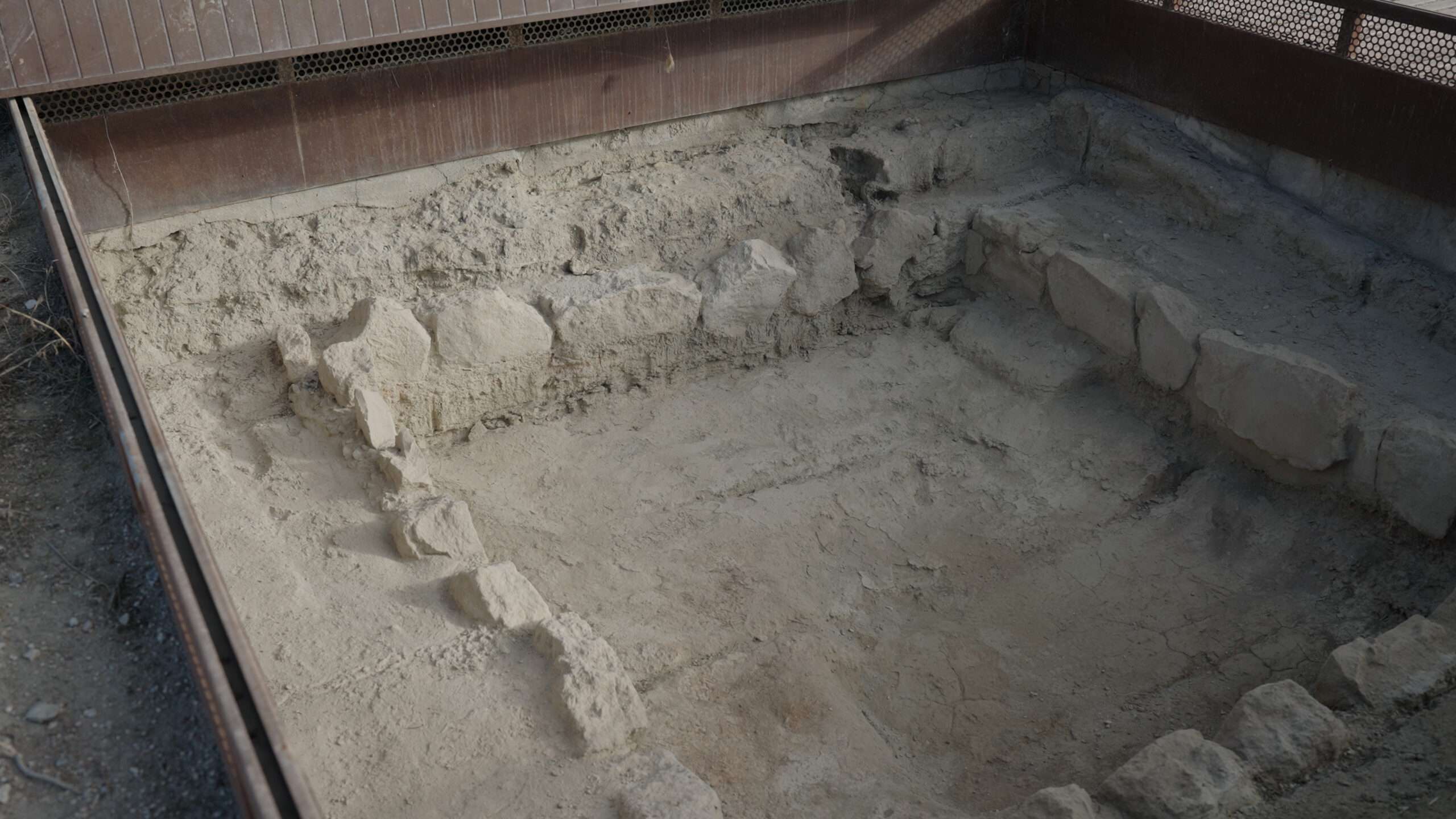TOMB 176
History of the tomb
It was overshadowed by the discovery of the Lady of Baza, with a very destroyed structure. This chamber is one of the largest in the necropolis, much larger than that of the Lady of Baza. It contained four red-figure kraters, used as cinerary urns, weaponry, Iberian pottery, metal remains of two chariot wheels, and, like the Lady of Baza, four amphorae in each corner of the chamber.
Thanks to the new excavations we know that the tomb has a certain complexity when it was built in an excavated well, covering it with an adobe wall, which was the first phase of the tomb. That adobe wall and floor were probably burned, as an act of purification. At a certain point in the second phase of construction, a masonry wall was erected, with a new plaster floor. It is possible that the complex grave goods of this tomb are divided between these two phases, but with current documentation, it is impossible to define them.
In some medium/large sized tombs there was an access to it, however, in this tomb this access could not be determined due to the state in which it was found.




– Cista: Burial that consists of four side slabs and a fifth that acts as a cover.
– Slab: Stone fragment, partially exsquared.
– Jabaluna: Native limestone with a dark color, like that of wild boar, when wet.
– Trousseau: Set of artifacts that accompany the deceased in his burial.
– Cinerary urn: Urn intended to contain the ashes of corpses.
– Necropolis: Large cemetery in which funeral monuments abound.
GALLERY



